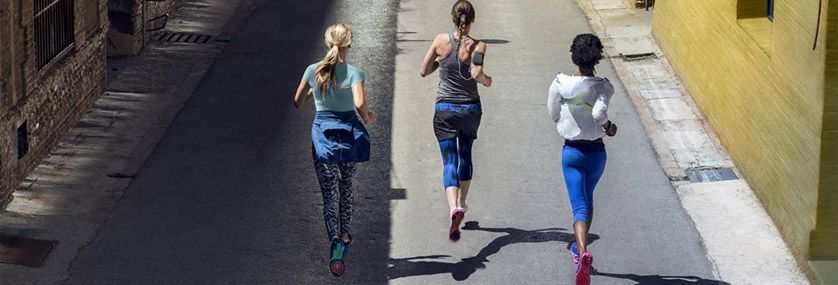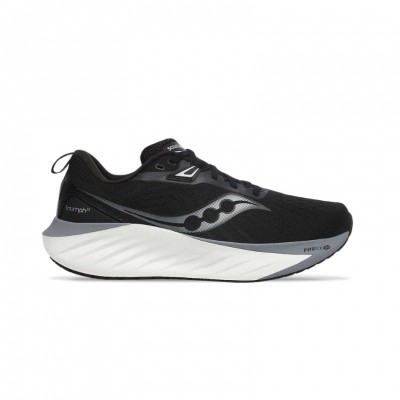In this article we are going to present you another joint; the hip, fundamental for the good functioning of any sport modality because it is where all the movements of our body fluctuate, that is to say, each movement that we originate has its beginning in this joint. To walk, bend and jump we always use the hip.
We will see what the hip is like, its shape and main characteristics so that you can get an idea of its anatomy. It is also essential that the runner knows what are the main injuries that occur, and as we are doing in each article, the different ways to prevent future injuries, discomfort, discomfort, ..., in addition to seeing small notes of the treatments that are performed.
We have already advanced as an introduction that unfortunately fractures, muscular problems (ligament injuries, tendinopathies,...) different levels of osteoarthritis, bursitis; in addition to other pathologies such as necrosis, femoroacetabular shock and osteogenesis that are less common but we will see annotations on them.
The hip must be taken care of by the sportsman to avoid losses of performance throughout his sports life and so that this type of problems turn out to be harmful for our enjoyment of the sports practice. Therefore, we begin with this very interesting article that has no waste.
Anatomy of the hip
The hip is the joint that joins the pelvis with the femur and when we speak of it we refer to the area in which the pelvis is located. It is a very stable joint, but because sometimes it must support the whole body is a joint, and like the ankle and knee often suffer arthritis, among other problems or injuries characteristics.
The hip is a bone that is composed of three parts:
Ilium: it is a larger bone, comparing it to the ischium and pubis; it also connects the spine with the two lower extremities both left and right.
Ischium: it is the back and lower part of the hip, that is why when we sit down all the weight falls on this area.
Pubis: is the anterior and lower part of the hip.
In the hip itself there is a cavity called acetabulum in which the head of the femur is inserted, and thus form the joint between the two bones.
Most frequent injuries of the hip
The most frequent injuries that can occur in the hip are of various types and are usually due to wear and tear or due to a fall or blow. These injuries are:
- Arthrosis: consists of wear and tear of the hip and can be the repeated use of movements throughout the sporting life. In addition, it can be caused by disease or also due to an injury or fracture.
- Bursitis: it is the inflammation of the bursa (bursa) that is located in strategic areas of the hip so that the joint friction between the various tissues is reduced to a greater extent.
- Fractures: evidently it is produced when the bone of the hip is broken, in most of the occasions it is produced because of a traumatism in the area, produced by diverse reasons.
- Sprains or muscle injuries: they occur in the muscles that are located in the area, and are sprains, tendinopathies or muscle ruptures, as we have already seen in other articles. Some of these muscles are the psoas, abductors, tensor fascia, gluteus, pyramidal, ischia... And the existing ligaments in the hip are: the round, pubofemoral, ischiofemoral and iliofemoral.
- Pubalgia is caused by inflammation of the muscles that are inserted in the anterior and inferior part of the hip called pubis. In disciplines where the lower train is used and hardly the upper train if we do not perform prevention exercises, this pathology can appear with the damages that it entails.
- Others, for example, necrosis (lack of blood supply on the bone) or femoroacetabular shock (when movement occurs in the joint the femur impacts with the vault of the acetabulum) also called impingement.
Causes of hip injuries
There are many possible causes of injury. In the present article we will see the most common ones.
It is necessary to take into account common factors of the causes of the injuries to all the sportsmen as they are the age, weight, height, overtraining, lack of flexibility,...
Other factors that must be taken into account are the discipline you are practicing:
The surface on which it is performed or the possible changes of the same ( cushioning is much lower on hard surfaces).
And sports disciplines where contact with other athletes sometimes occurs in a violent manner, as is often the case in team sports.
Possible muscular imbalances between different muscle groups, as can happen between the adductors and abdominals (for example, this is the typical cause of pubalgia). Other more specific causes are, for example, trauma, which can lead to fractures.
In addition, psoas tendinitis (in athletics) occurs due to resistance training and training with slopes.
And on the other hand, osteoarthritis can be caused by:
- The weight of the athlete.
- The loads that are produced due to a bad functionality of the hip.
- Possible injuries of the muscle.
- And the deficiency of physical activity in our life habits.
Symptoms
The symptoms that occur at the articular level on the hip are very similar for that reason, in many occasions and if we do not have the point of view of a professional with good means at his disposal it is very easy that we are mistaken of diagnosis.
The main symptoms are:
- Pain and discomfort in the area where the injury has occurred. The pain is felt during the movement or when we make an inspection on the area.
- In addition to pain there is a very annoying inflammation that prevents us from carrying out the movements (to raise the leg, rotation of the hip,...) that we realize when the joint is totally healthy.
- Sensation of heat because there is an injury in the area.
Prevention
In this penultimate section of the article, we will see how a good prevention can be carried out by means of several advices that will be essential to carry out so that the reduction of the injuries is guaranteed.
First of all, it is very important to carry out a biomechanical study of our footprint. Thus, we will be able to correct errors in the way of stepping and avoid unnecessary overloads.
It is important to use a good technique of movement closely related to the previous section.
Important to avoid as far as possible the typical hip fractures, is the intake in good quantities of vitamin D, it will certainly help us to prevent a possible early osteoporosis (fragility of the bones) and thus our athlete will avoid possible scares.
Knowing how to use sports equipment (without going into the footwear that we have already said in other articles that it is essential), especially in sports where contact occurs constantly (soccer with shin guards, rugby with various protections, ...).
Knowing the limits of our body; we gain this with experience and it is another point in our favor.
And we do not want to forget that it is very important to do good strength (eccentric and isometric) and flexibility tasks with their corresponding compensations, in addition to a quality warm-up; all this will help us to avoid new injuries.
Treatment
Finally, the treatments that can be carried out are as diverse as there are injuries. Each one of them must be treated individually so that the recovery of the athlete is of the highest quality and as early as possible.
We are going to break down little by little how each one of them would be. For example, if we focus on muscle injuries (psoas, fascia, gluteus, pyramidal, ...) or tendinopathies should be treated in a very similar way as is done when they occur in the ankle and knee, ie, with ice, rest, elevation, strengthening, flexibility, physiotherapy sessions,...
On the other hand, when a fracture occurs, the most common treatment is surgery to prevent the recovery from being arduous and difficult with a conservative treatment; but if we carry out the hip operation, different nerves may be damaged, such as the sciatic nerve, for example. For all these reasons, the point of view of doctors, physiotherapists, osteopaths, and a common understanding between them is fundamental for a suitable recovery.
In addition, in different phases of recovery we have to take into account that it must be done in a progressive manner, increasing the load gradually and in an appropriate manner to avoid possible relapses, something very common when we rush. Therefore, as professionals our goal is to have all the variables under control so that these cases do not happen.
Finally, we will mention the treatment to be performed when the injury produced is pubalgia. As we have said before, this injury is caused by a decompensation between the adductors and abdominals.
The initial treatment in these cases is conservative:
- Rest until the pain subsides, to gradually and in a controlled manner do strength and flexibility work on the muscles involved in the initial decompensation, which the athlete must correct to avoid further problems.
- It should also be complementary to this work, physiotherapy sessions and osteopathy with both manual techniques and the most appropriate means, which are electrostimulation, laser technique, ultrasound, cryotherapy, ...
- If in months the injury does not improve, a surgical treatment can be considered, which is obviously more aggressive, but with a good work it leads to an optimal state of the athlete.
Conclusions
As you have been able to observe, we have shelled of a general form what can become the most frequent injuries of the joint of the hip so that in this way you, as sportsman or as trainer, know which are the pains or injuries that you can manage to have in the above mentioned zone.
In addition, if we want that the injuries or pathologies that happen to us have a prompt and better recovery and that the implementation of our sporting activity is of quality, we have to put ourselves in the hands of professionals as soon as possible so that they guide us in an appropriate and positive way.
Finally, we believe that from Rend and Prev we have already broken down the entire lower body with the joints and areas that have been proposed in previous articles. We hope that it has helped you and that the terminology used has not been any impediment and you have enjoyed it.
We will continue to complete the whole body with possible injuries and how to treat them in each body area, so that all our readers have no doubts about this topic.
Read more news about: Sports Injuries



















